![]()
For more than five years, Kelli Brinegar has been using her ability to write and her passion for research to tell the tale of what cats are thinking and why. She has provided care to more than 30 cats in her lifetime.Read more
| Published on August 10, 2023In the vast world of canine companionship, the best dog training books stand as essential bridges between humans and their four-legged friends. This bond, strengthened by mutual understanding and trust, has given rise to an expansive library of dog training literature.
From the nuances of breed-specific guidelines to the ever-evolving methodologies that reflect our deepening understanding of dog behavior, there’s a book tailored to every dog owner’s need. Whether you’re a novice eager to train your first puppy, a parent introducing the joy of dog training to your child, or an enthusiast aiming to dive into the competitive realm of dog sports, the right book can be your guiding beacon.

Our journey into this literature-rich domain aims not just to list popular titles, but to delve deep into their essence, understanding the philosophy each book promotes, the credibility of their authors, and the specific audience they cater to. By understanding these facets, we hope to match every reader with a book that resonates with their aspirations and the unique needs of their canine companion.
So, if you’re on the hunt for that perfect guide, be it for breed-specific training, agility exercises, or the noble realm of service dog training, you’re in the right place. Join us as we embark on this literary expedition, shedding light on the best dog training books the market has to offer.
Selecting the right dog training book can be essential in understanding and effectively training your dog. Here are some factors to consider when choosing dog books to help with your pup’s manners:
Determine what you want to achieve with the training. Are you training a puppy, an older dog, or addressing specific behavioral issues? Different books cater to different needs.
Look for books written by experienced trainers, behaviorists, or veterinarians. Their experience and qualifications can give credibility to the content.
Some trainers advocate for positive reinforcement methods, while others might support more traditional or punitive techniques. Ensure the training approach aligns with your beliefs and what you think is best for your dog.
Read reviews or seek recommendations from other dog parents, professionals, or local dog training schools.
The book should be easy to understand, with clear instructions and possibly supplemented with photos or diagrams. A good training book will offer step-by-step methods.
Dog training methods and understanding of canine behavior evolve over time. Choose books that are recently published or have been updated with the latest techniques and information.
Real-world examples can provide context and make it easier to apply the techniques to your situation.
Dogs have different temperaments and behaviors depending on their breed. Some books may cater to specific breeds, while others offer advice for a wide range of breeds.
Ensure the book provides solutions or guidance for potential challenges or issues you might face during training.
Some books might come with online resources, videos, or interactive materials that can enhance your training experience.
A good book will offer tips and methods to keep both the dog and the trainer motivated throughout the process.
Ensure the techniques advocated are safe for both the dog and the handler.
Some books might focus on quick training methods, while others may delve deep into shaping a dog’s behavior over time. Choose based on the time and effort you’re willing to commit.
Training methods backed by scientific research or behavioral studies tend to be more effective and humane. Also, some books include real-life case studies to illustrate scientific or proven methods, which can provide valuable insights into the practical application of techniques.
Lastly, it might be beneficial to use multiple books or resources to gain a holistic view of dog training. Different authors and trainers offer varied perspectives that can be valuable in different situations.

Decoding Your Dog is an enlightening dive into the world of canine psychology. Authored by experts from the American College of Veterinary Behaviorists, it presents evidence-based approaches to understanding and addressing common dog behaviors. The book avoids jargon, making complex behavioral concepts accessible to everyday dog owners. What sets it apart is its emphasis on positive reinforcement methods, steering clear of punitive measures that can harm the bond between owner and pet. Each chapter provides actionable advice, allowing readers to address specific challenges effectively. Overall, it’s a must-read for anyone seeking to cultivate a deeper, more harmonious relationship with their canine companion.
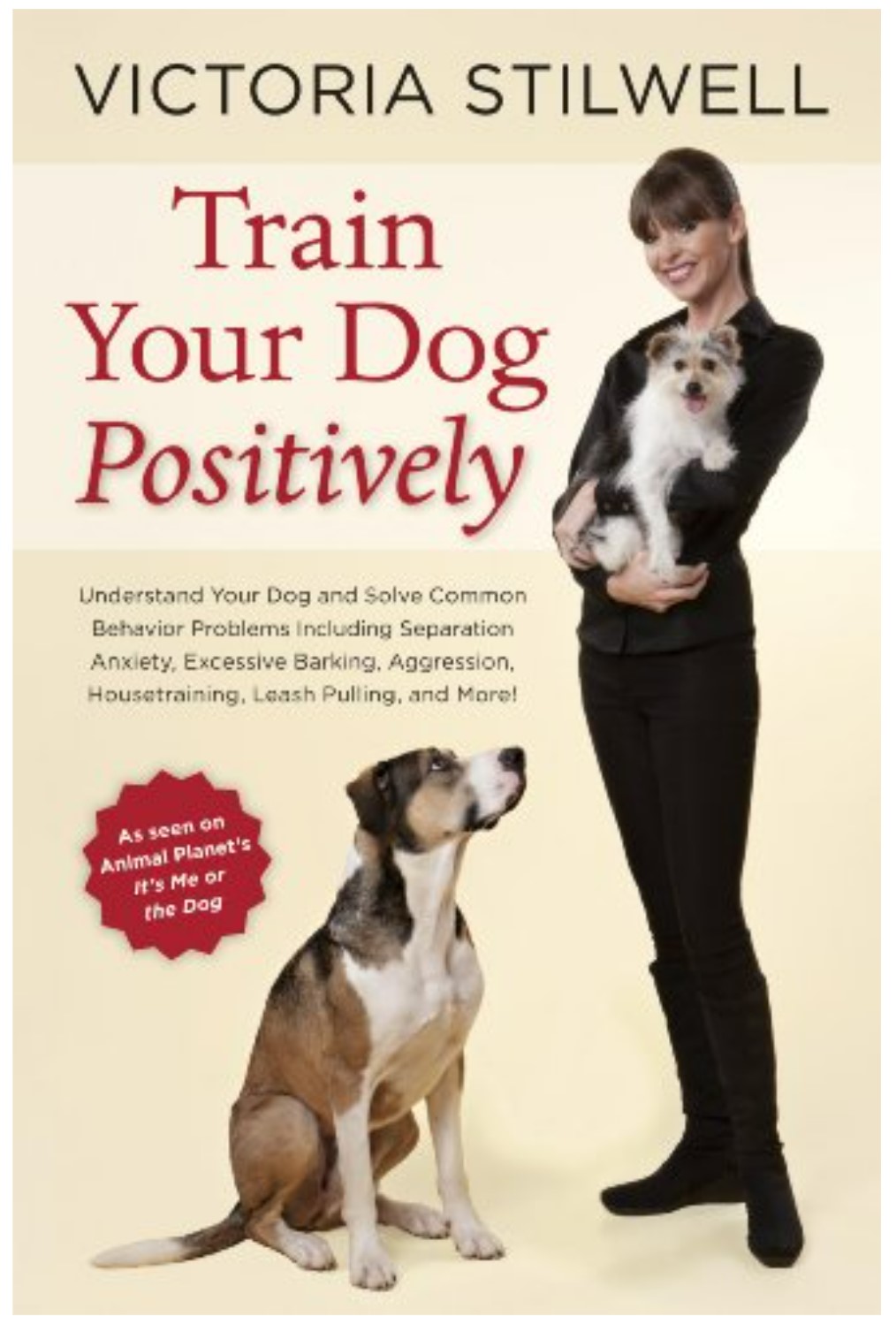
Train Your Dog Positively by Victoria Stilwell is a refreshing testament to the power and efficacy of positive reinforcement in dog training. Stilwell, known for her television appearances and passionate advocacy for humane training, delves into easy-to-follow techniques that prioritize understanding and mutual respect. The book is comprehensive, covering everything from basic commands to handling behavioral issues. What stands out is Stilwell’s commitment to debunking dominance-based methods, emphasizing that understanding a dog’s emotions is key to effective training. Her methods are both scientifically-backed and compassionate, making this book a treasure for dog owners at any experience level. It’s more than just a training guide—it’s a call to forge a deeper, kinder relationship with our canine companions.
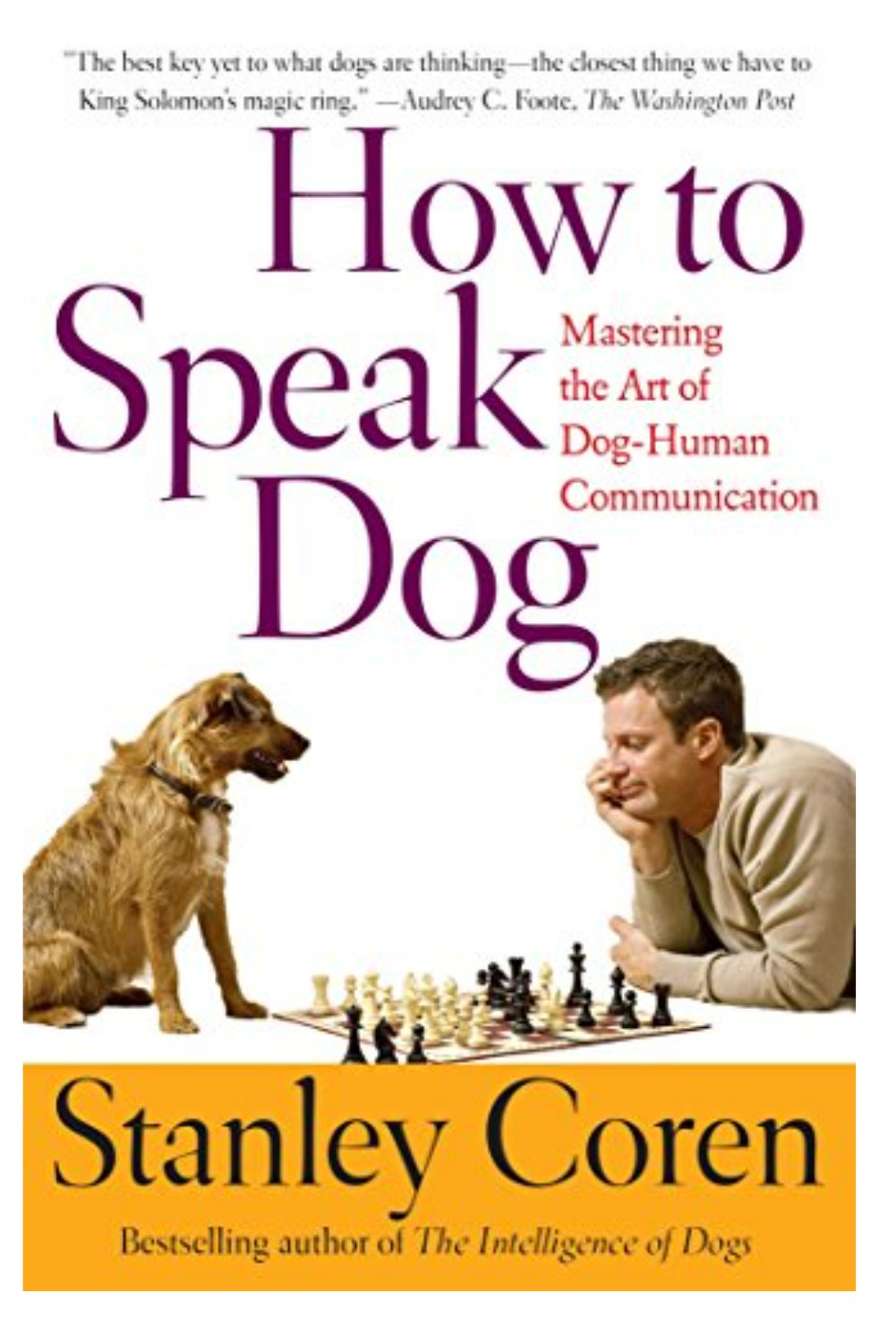
How To Speak Dog by Stanley Coren offers a captivating look into the intricate language of dogs. Dr. Coren, a renowned canine psychologist, delves deep into canine communication, dissecting vocal sounds, body language, and facial expressions. The book sheds light on the often misunderstood signals dogs give, enabling readers to better understand and communicate with their furry friends. It’s not merely a training guide; it’s a comprehensive manual on decoding the subtle cues of dogs. For those eager to foster a deeper bond and enhance mutual understanding with their pets, this book is an indispensable resource.
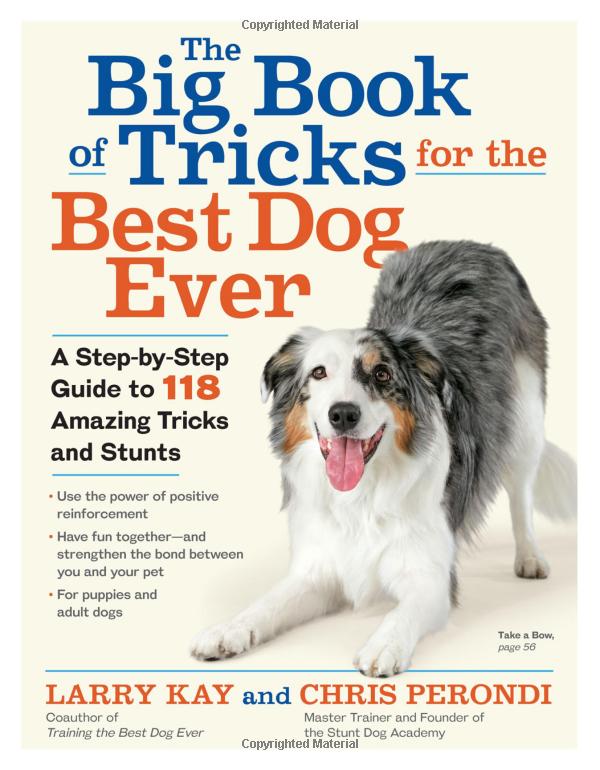
The Big Book of Tricks for the Best Dog Ever by Larry Kay and Chris Perondi is a treasure trove for dog enthusiasts eager to engage their pets in fun and stimulating activities. With its wide range of tricks, from the simple to the sensational, this guide caters to both novice trainers and seasoned dog lovers. The step-by-step instructions, complemented by illustrative visuals, ensure clarity and ease of understanding. One of the book’s standout features is its emphasis on positive reinforcement, ensuring that training remains a joyful experience for the dog. Whether you aim to impress friends, participate in shows, or simply bond with your pet, this guide offers a myriad of ways to entertain and challenge. It’s not just about tricks; it’s about fostering a dynamic, playful relationship with your canine companion.
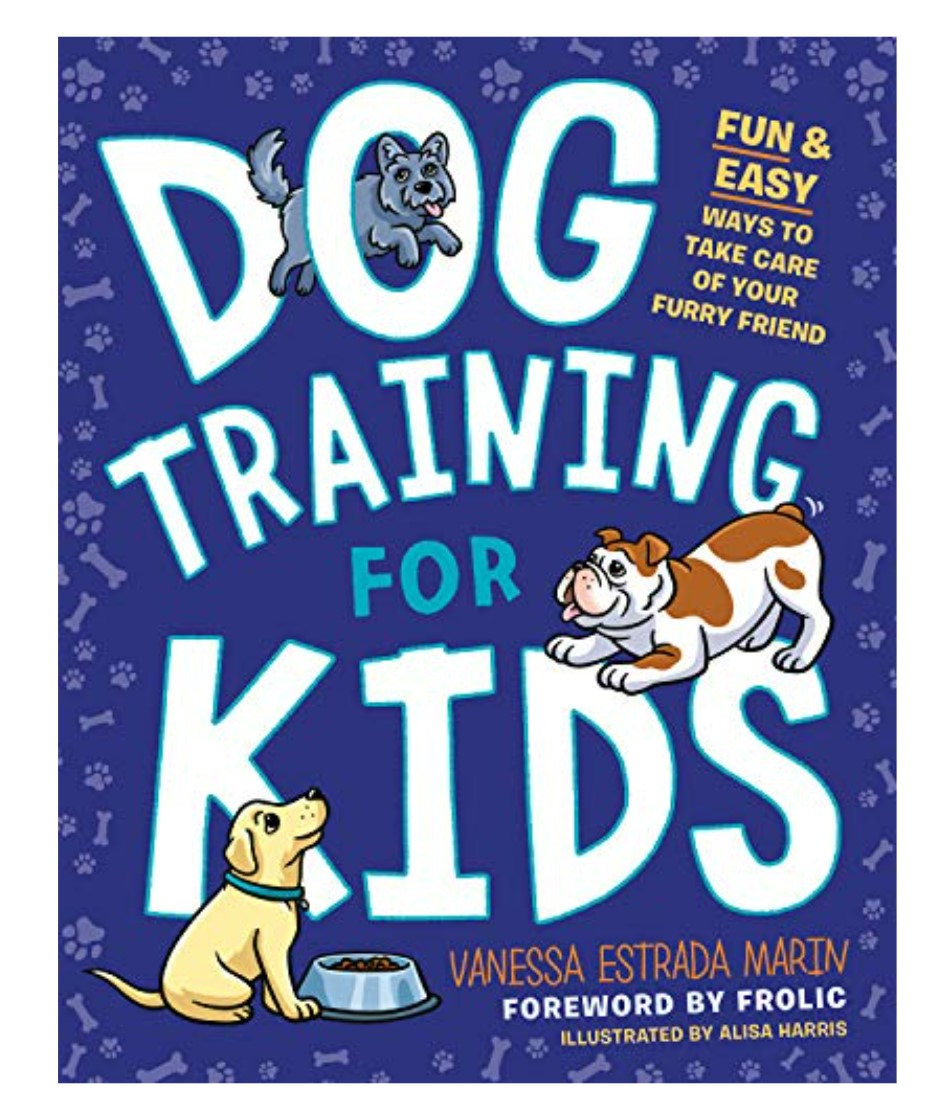
Dog Training for Kids serves as a delightful introduction to the world of dog care and training, tailored specifically for young readers. The book is written in an engaging manner that captures the youthful spirit while imparting essential knowledge. It champions responsible pet parenting and introduces kids to foundational training techniques using positive reinforcement. Beyond just training, the book offers insights into general dog care, ensuring a holistic approach. Its hands-on activities and step-by-step guides ensure young dog lovers can confidently interact with and train their pets. Truly, it’s a perfect starting point for any child eager to understand and bond with their canine friend,

Puppy Training in 7 Easy Steps stands out as a concise, yet comprehensive guide for new dog owners. Its structured approach, broken down into seven easy-to-follow steps, demystifies the often daunting process of puppy training. The book’s strength lies in its clarity, offering practical advice on topics ranging from housebreaking to obedience commands. Its emphasis on positive reinforcement techniques ensures a loving and nurturing training environment. Ideal for those who are bringing home a puppy for the first time, this guide provides invaluable insights to set both the owner and their new companion on a path to success. With its step-by-step approach, the journey from playful pup to well-trained adult dog seems much more achievable.

The Happy Puppy Handbook by Pippa Mattinson is a heartfelt guide that prioritizes the well-being and happiness of the puppy above all else. Mattinson’s approach is rooted in her profound understanding of puppy behavior, and she presents her insights in a manner that’s both enlightening and practical. The book offers a holistic view, touching on health, nutrition, socialization, and, of course, early training techniques. Its emphasis on forging a positive, joy-filled relationship between owner and puppy is palpable throughout. Novice dog owners will especially benefit from the author’s wisdom, as she anticipates common questions and hurdles, providing effective solutions. It’s a guide that not only educates but also fosters a deep appreciation for the joys of puppyhood.

Clicker Training for Dogs delves deep into a modern, science-backed method of dog training that focuses on positive reinforcement. This book strips down the seemingly complex process of clicker training to its bare essentials, making it accessible for trainers of all levels. The emphasis is on building a strong, trust-based relationship between the dog and owner, reinforcing good behavior without the need for harsh methods. The clear step-by-step instructions ensure that each training session is productive, rewarding, and fun for both the dog and the trainer. Readers will also appreciate the troubleshooting sections which address common challenges faced in clicker training. Overall, it’s an invaluable guide for anyone looking to train their dog in a compassionate and effective manner.

Be Right Back! is a timely guide addressing one of the most common yet distressing issues faced by dog owners: separation anxiety. The book goes beyond just providing training techniques, delving into the root causes and emotions dogs experience during episodes of anxiety. Its empathetic approach ensures that the dog’s well-being remains central to the process of addressing the issue. Practical, step-by-step solutions are provided, each grounded in positive reinforcement and understanding. The author’s insights are bolstered by real-life examples, making the advice relatable and actionable. For those struggling with their dog’s anxiety, this book offers both hope and a clear path forward.
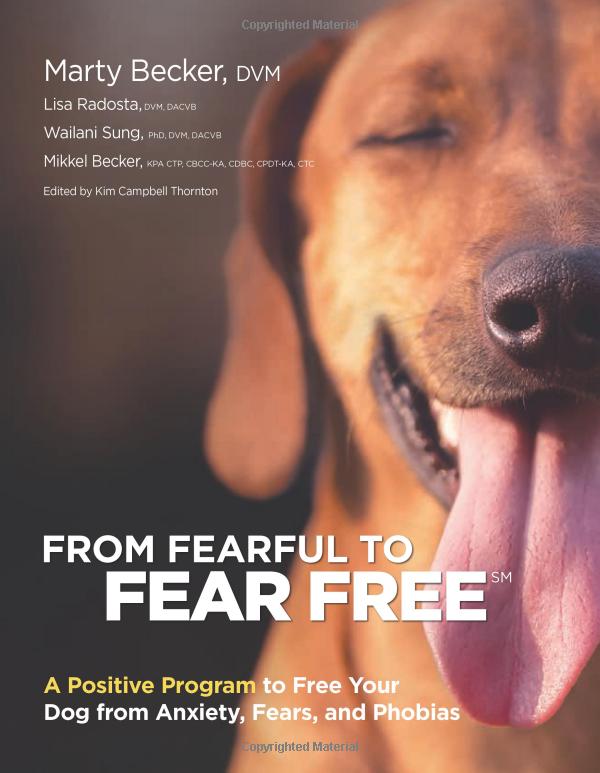
From Fearful to Fear Free is an indispensable guide for any dog owner navigating the challenges of a pet’s anxiety and fears. Authored by experts in the field, the book combines years of research with hands-on experience to address the myriad reasons dogs experience fear. The comprehensive approach doesn’t just stop at identification; it provides actionable steps rooted in positive reinforcement to help alleviate these fears. The genuine compassion and understanding conveyed throughout the book highlight its ethos: a commitment to transforming lives, both canine and human. Readers will appreciate the blend of case studies, practical exercises, and expert insights. This book stands as a beacon of hope and a roadmap to a more peaceful life for dogs and their owners.
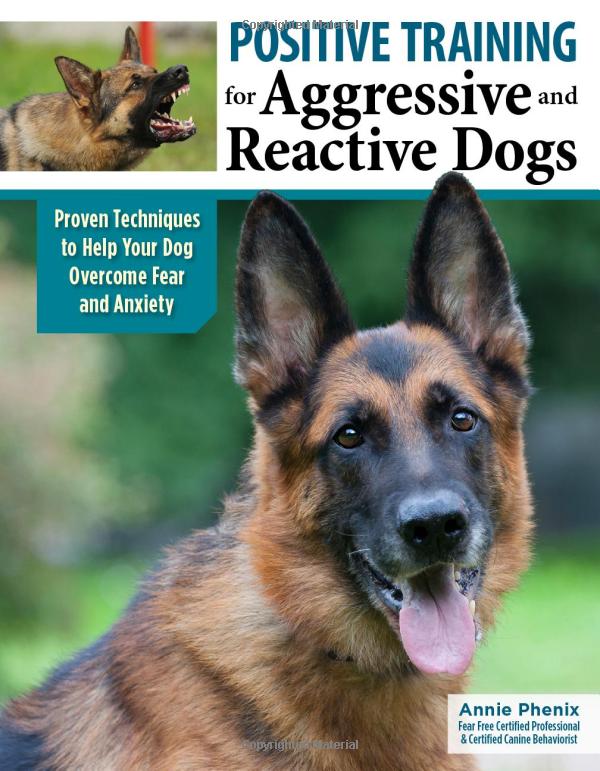
Positive Training for Aggressive and Reactive Dogs is an essential read for dog parents grappling with challenging canine behaviors. This book takes a refreshing stance by focusing on positive reinforcement methods to address aggression and reactivity, rather than punitive techniques. Detailed explanations provide insights into the reasons behind these behaviors, helping owners understand their dogs better. The structured, step-by-step training plans outlined are both practical and effective. What sets this book apart is its emphasis on creating a bond of trust and understanding between the dog and the owner. By advocating for patience, consistency, and compassion, it promotes a holistic approach to transforming the lives of aggressive and reactive dogs.
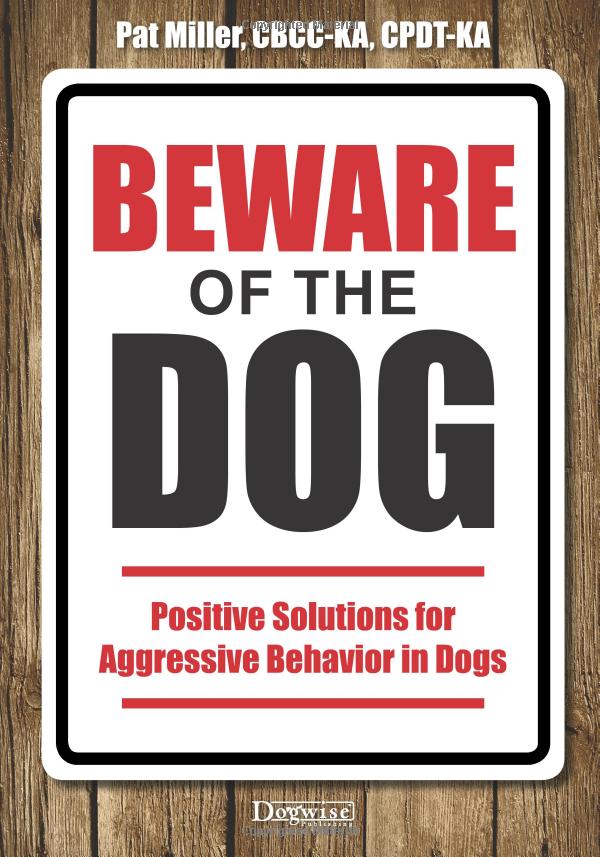
Beware of the Dog: Positive Solutions for Aggressive Behavior in Dogs stands out as a comprehensive guide that addresses the multifaceted issue of canine aggression with depth and clarity. The author delves into understanding the root causes of aggressive behavior, emphasizing the importance of identifying triggers and early warning signs. Through a foundation of positive reinforcement, the book offers solutions that prioritize the dog’s emotional well-being. Real-world scenarios and case studies enrich the content, providing readers with relatable contexts and solutions. The book not only empowers dog owners with knowledge but also fosters a deeper bond of trust and understanding with their pets. For anyone confronted with canine aggression, this resource offers hope and actionable strategies.
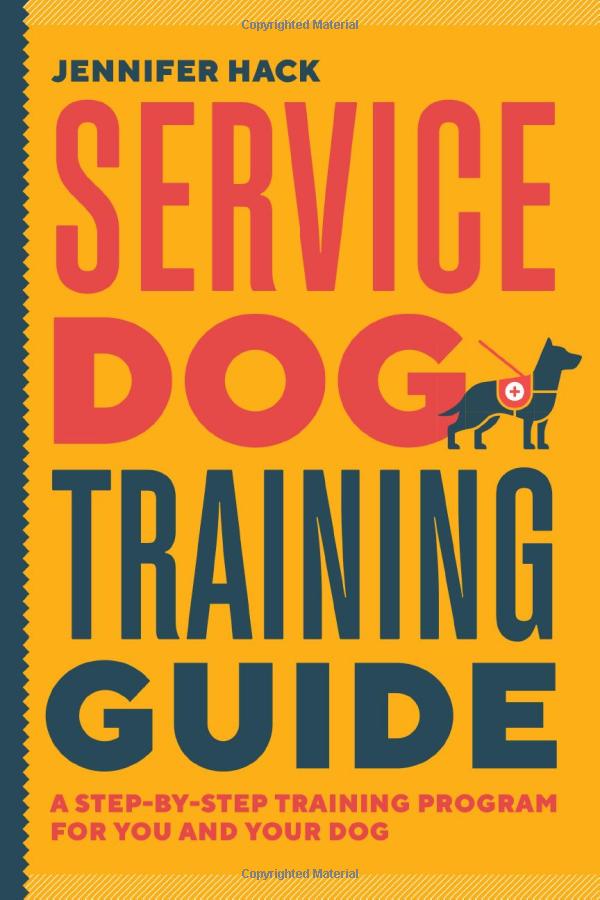
Service Dog Training Guide is a definitive manual for those aiming to train their dogs for service roles. The guide comprehensively breaks down the complexities of service dog training, making the process more accessible to everyday dog owners. Covering everything from basic obedience to task-specific skills, the book ensures a well-rounded training experience. The structured, step-by-step approach ensures clarity and provides checkpoints for progress. Moreover, its emphasis on strengthening the bond between the handler and the dog underscores the importance of teamwork. For anyone considering the journey of training a service dog, this book is an invaluable starting point.
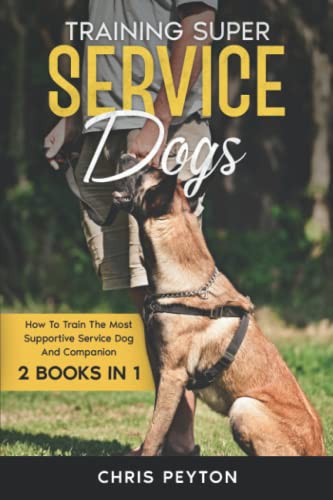
Training Super Service Dogs is an ambitious and thorough guide to cultivating highly skilled service dogs. The author emphasizes the importance of developing a deep-rooted bond between the handler and the dog, which stands as the foundation for all subsequent training. The book’s structure ensures a progressive learning experience, starting from fundamental obedience commands to specialized tasks unique to service roles. What sets this book apart is its dedication to ensuring that service dogs are not just trained but are truly supportive and intuitive to the needs of their handlers. Real-life anecdotes and success stories peppered throughout offer both inspiration and practical insights. For those committed to achieving the pinnacle of service dog training, this book offers a pathway.
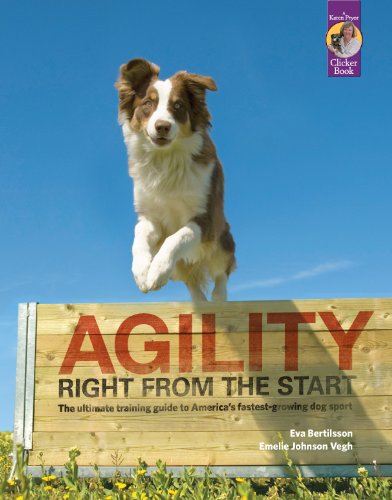
Agility Right from the Start serves as an exhaustive resource for agility enthusiasts, from beginners to seasoned participants. It delves deep into the foundations of the sport, providing readers with a thorough understanding of the principles and techniques that underpin agility training. The book’s methodical approach, coupled with clear instructions and illustrative visuals, ensures that both the handler and the dog progress systematically. Emphasizing positive reinforcement and building mutual trust, it promotes a training methodology that is both effective and enjoyable. Throughout the guide, real-life anecdotes and expert insights pepper the narrative, offering valuable context and guidance. Anyone looking to venture into or master dog agility will find this book indispensable.
Yes, there are breed-specific training books available. Each dog breed has its unique temperament, characteristics, and challenges, and these books cater to those specific needs. For example, training a Siberian Husky, known for its independent nature, might be different from training a Golden Retriever, which is typically eager to please. A breed-specific book will delve into the nuances of the particular breed, offering insights into its history, temperament, and tailored training techniques. These books can be incredibly beneficial for individuals who wish to understand and train their breed more effectively.
Finding a book that aligns with your training philosophy involves researching and understanding the author’s approach and methodologies. Begin by reading the book’s description, reviews, and any available excerpts. Many books will state their training approach outright, be it positive reinforcement, balanced training, or another method. Also, seeking recommendations from professionals or fellow dog owners who share your philosophy can be helpful. Finally, attending dog training workshops or seminars can expose you to various authors and resources that resonate with your beliefs.
Absolutely, there are numerous books dedicated to puppy training. Puppies have distinct needs compared to adult dogs, from basic housebreaking to early socialization. Puppy-specific training books focus on these formative stages, offering guidance on setting a solid foundation for future obedience and behavior. These books typically cover topics such as crate training, bite inhibition, basic commands, and introducing the puppy to new environments and experiences. Using a puppy-specific guide ensures that new dog owners are equipped to handle the joys and challenges of raising a young dog.
Yes, there are dog training books designed specifically for children. These books are typically written in an engaging, easy-to-understand manner, often supplemented with illustrations or photographs. They focus on teaching kids the basics of dog care and training while emphasizing safety and appropriate interactions. By using kid-friendly language and activities, these books empower children to be responsible and compassionate dog owners and trainers. Such resources can be a great way to involve the entire family in the dog’s upbringing and training.
Indeed, many books cater to dog sports enthusiasts, providing detailed guidance on training for agility, flyball, herding, and other canine sports. These books delve deep into the specific techniques, equipment, and conditioning required for each sport. Agility training, for instance, will have detailed instructions on teaching a dog to navigate obstacles like jumps, tunnels, and weave poles. Apart from training techniques, many of these books also offer insights into competition rules, preparing for events, and optimizing the dog’s physical fitness.
The field of dog training is continually evolving, driven by new scientific research and a deeper understanding of canine behavior. Ideally, training techniques and methods in books should be updated as new findings become available or best practices change. While there’s no fixed timeframe, a general rule of thumb could be every 5 to 10 years. However, it’s crucial to keep in mind that foundational principles, especially those rooted in positive reinforcement and science-backed methods, remain consistent. Updates are often refinements or new techniques that enhance these foundational principles.
Yes, there are specialized books dedicated to training assistance or service dogs. These dogs play critical roles, such as assisting individuals with disabilities, detecting medical conditions, or providing emotional support. The training for these dogs is comprehensive and specific to the tasks they’ll perform. Books on this topic guide trainers through the specialized skills these dogs need, from basic obedience to more complex tasks like retrieving items or alerting to specific conditions. Moreover, these books also emphasize public access training, ensuring that service dogs behave impeccably in diverse environments.

In the end, the journey to effective dog training is as enriching for the owner as it is for the dog. With the right book in hand, tailored to individual needs and philosophies, the path becomes clearer, leading to a harmonious bond that stands the test of time. Whether you’re a first-time owner or a seasoned trainer, these best dog training books promise to be the invaluable companions you need, guiding each step with wisdom and expertise.